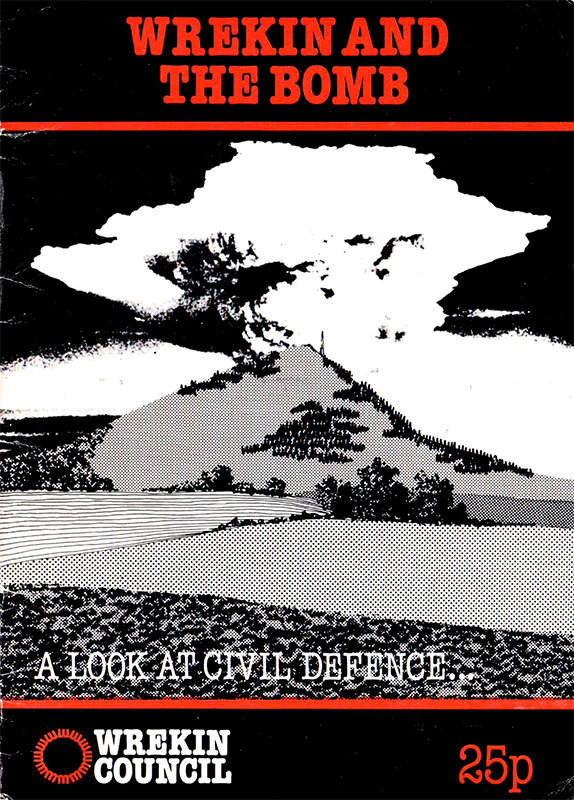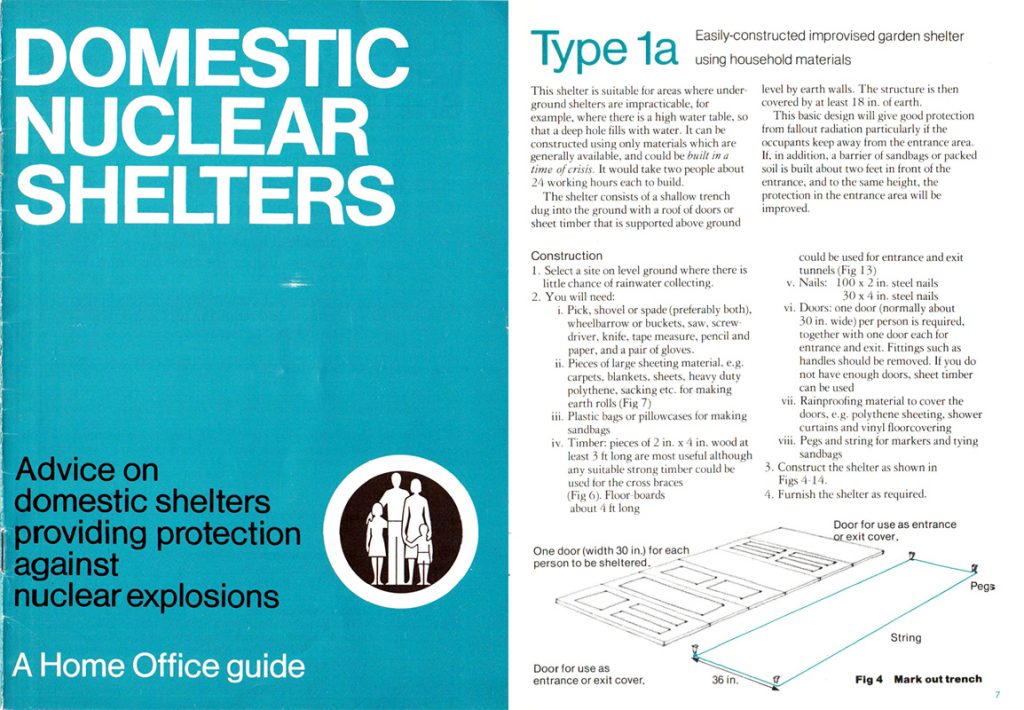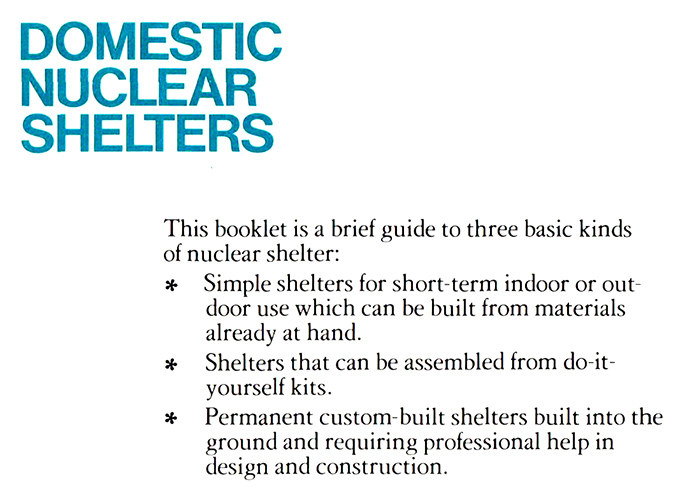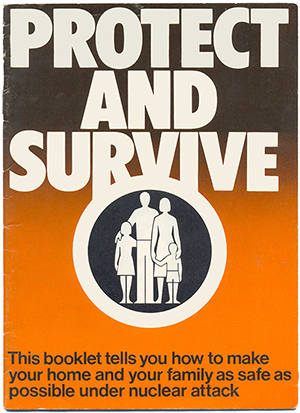The beginning of the 1980s saw the UK government pursue civil defence with a renewed vigour. Local authorities, who were legally responsible for implementing civil defence preparations, were put under increasing pressure to demonstrate that they were prepared for nuclear attack.
Not all were happy to comply, however, and many left-leaning councils chose to fulfil their public information duties by publishing booklets critical of civil defence.
Wrekin and the Bomb, subtitled A look at Civil Defence, was published in the early 1980s by Wrekin Council, setting out their case against nuclear weapons and civil defence. Pictured on the cover is The Wrekin itself, the hill which gives this area of rural Shropshire its name, with a nuclear blast close behind.
The council’s reference to its “legal and moral obligation” refers to the regulations imposed on them from above, which gave central government the power to force councils to make preparations for attack.




